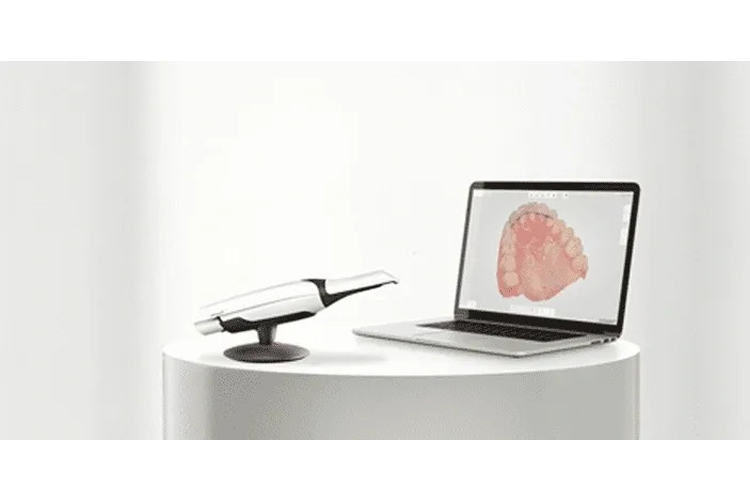One of St. Lawrence Dentistry’s key focus areas is jaw bone preservation and its rebuilding.
You can lose bone in your mouth for a variety of reasons. The two most significant are bone loss due to tooth removal and gum disease (periodontal disease). The most critical items in Dr. Hawryluk’s bone-building armamentarium are “collagen membranes” and “bone grafting materials”. The article focuses on membranes in particular. The membranes that Dr. Hawryluk uses stabilize the position of bone added to the jaw to build it up.
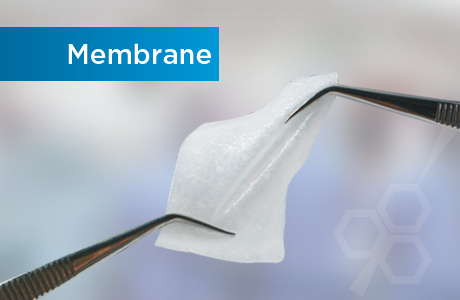
The three types of barriers used at St. Lawrence Dentistry to protect newly added bone are dressings, processed collagen membranes, and processed tissue membranes.
Collagen is the main structural protein found in skin and other connective tissue. Collagen fibers support gum tissues, plus collagen is a significant component of the matrix that supports cells. In addition, collagen and keratin give the gum its strength, waterproofing, and elasticity.
Collagen Membranes are “type 1 collagen” of bovine (cow) origin made into a sheet that can cover over a bone graft and give it a shape and a structure. Type I collagen is the most abundant in scar tissue, skin, tendons, artery walls, and bones. It is a robust collagen type with good tensile strength and is the molecule of choice for most of our membranes. It is the most abundant protein in the body, has a ‘triple helix’ molecular shape, and has excellent biocompatibility between species. Therefore, we can use bovine or pig-based products for human grafting procedures. Since it is the most abundant protein in the body, humans have suitable mechanisms for resorbing it.

Tissue membranes are either made of pig, cow, or human tissues. Their processing takes away cells that leave only a collagen matrix behind. An example of this type is the Bio-Guide membrane which Dr. Hawryluk uses for the Pinhole Gum Rejuvenation procedure.
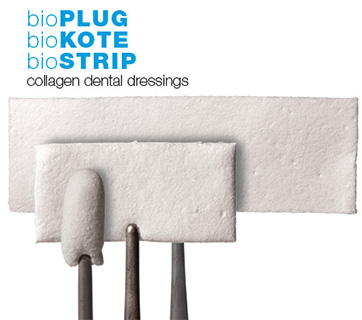
Dressings are collagen products used to stabilize early wounds. These are used for simple bone grafting when all tooth sockets’ ‘side bone’ are intact. In this instance, the dressing functions as a wound stabilizer rather than a barrier. These also type 1 collagen products. Dr. Hawryluk uses BioHorizons products called BioStrip and BioPlug, which are collagen wound dressings designed to absorb blood or fluids and protect the dental site for optimal regeneration.
In instances where the side bone of a tooth socket is missing (fenestration), Dr. Hawryluk uses a collagen membrane to reestablish the borders of where he will regenerate the “alveolar” bone. They are longer lasting than simple collagen dressings and prevent the gum tissues from migrating inwards to where we want bone to form. Dr. Hawryluk uses a membrane called “Mem-Lok”, which Biohorizons produce. It contains highly purified type I collagen to increase resorption and helps ensure optimal bone regeneration.
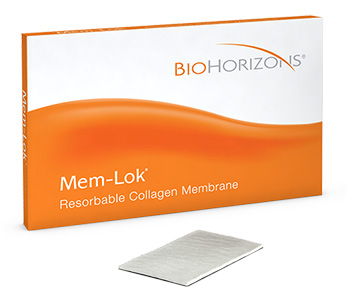
In a simple socket preservation procedure, Dr. Hawryluk will take the tooth out as gently as possible and then examine the socket to make sure there are no breaks in the bone plate. He will then place particulate bone into the socket. Without gaps, he will create a lid with the BioHorizons BioPlug, effectively sealing the socket and bone. The plug is sutured and stays for 5-10 days, and resorption occurs through the enzymes in the saliva and blood. After four months, we will see a nice healed-up socket with new bone which has grown underneath. You will now be able to get dental implants placed in the newly regenerated socket bone graft.

A collagen membrane is used instead of a wound dressing for three main reasons:
- If the bone around a tooth socket is damaged or extremely thin
- When a bone graft is placed outside the socket bone (instead of inside)
- When a long lasting barrier function is needed
Collagen dressings like BioPlug are beneficial but do not last long enough to do any of these three situations.
Choosing the membrane with the right resorption time is critical—dressings like “Bio-Plug” last two weeks or less. Bio Horizons Mem-Lok will stay for 6-10 weeks. It is strong and acts as a barrier during the critical bone formation period. St. Lawrence Dentistry also uses “Bio-Guide” membranes. It is a porcine-based, tissue-processed membrane that lasts around the same time frame.
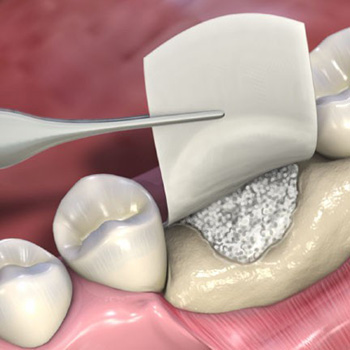
A collagen membrane does three things.
- Support the hard (bone) and soft tissue (gum) healing
- Support and stabilizes the bone graft
- Excludes fast growing epithelial cells (outer gum cells) from slow growing bone
We thought point 3 (prevention of epithelial cells from accessing the bone) was the most membrane function for many years. However, it is not quite that way. You can actually poke holes in a membrane, and you will still get plenty of bone growth and sometimes even enhanced bone growth. The newer membranes used at St. Lawrence Dentistry let nutrients and metabolites pass through the membrane, enhancing bone growth.
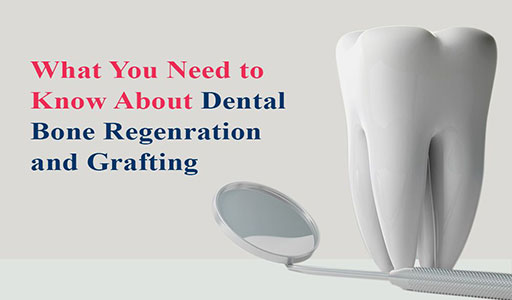
Choosing a suitable membrane for its handling properties is very important. For example, some membranes are soft and can drape over an area, while others are harder and have memory. A Bio Guide membrane is very soft and will adapt in shape to the area underneath the membrane. In contrast, the Mem-Lok membrane is rigid and wants to maintain its shape like an umbrella. If a patient has a bone defect from a traumatic extraction and needs to fill it, Dr. Hawryluk will often use a more rigid membrane that gives a “tenting effect”. Hence when he fills the defect with bone, it can hold its shape. After a healing time of several months, Dr. Hawryluk can place a dental implant.
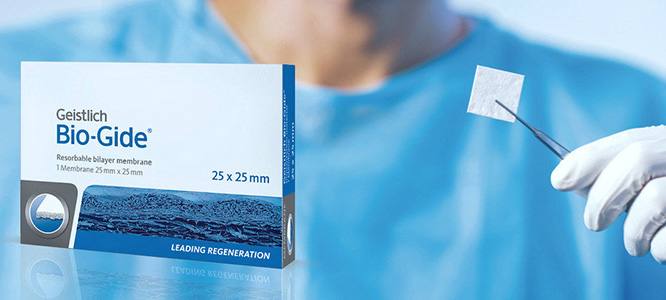
The periosteum (bone tissue lining) acts as a natural barrier, but it does not hold the shape for several weeks as a membrane does. Consequently, the periosteum tends to conform to the shape of the wound underneath, which will undermine the bone growth. There is no epithelium (tissue that migrates inwards, disrupting bone) inside the flap where the periosteum is. However, sometimes the periosteum needs to be slit to introduce flexibility in the flap, introducing epithelial cells. Also, granulation (healing tissue) tissue can cause epithelium infiltration.
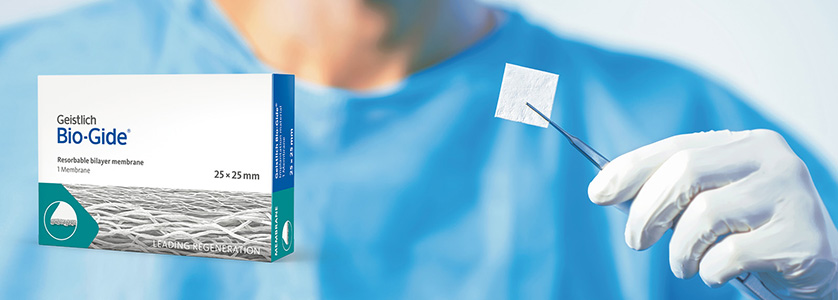
Dr. Hawryluk will do everything possible to get excellent results for your jaw bone augmentation. Successful bone preservation will facilitate the possible placement of dental implants and preserve your natural facial features.
If you are looking for a new dentist in Mississauga or would like to discuss this topic, please call us to make time to visit St. Lawrence Dentistry.
References:
- Sleep Dentistry: Enhancing Comfort and Care During Dental Procedures - July 11, 2024
- The Revolutionary Injection Molding Technique for Composite Veneers - June 27, 2024
- Why Are Third Molars Called “Wisdom Teeth”? - June 19, 2024








